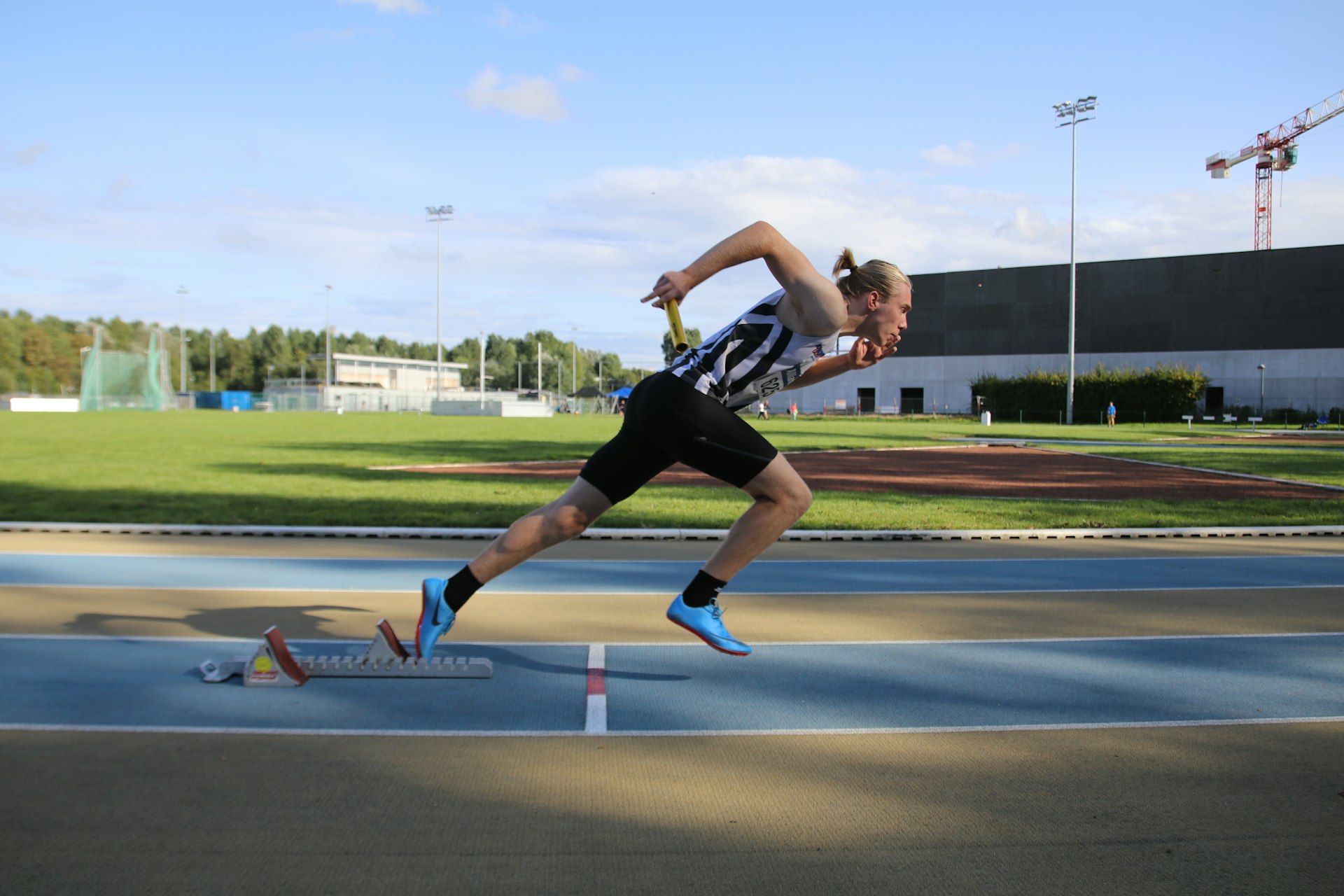Proactive Injury Prevention Strategies for Modern Athletes: Techniques, Tools, and Guidance

Photo by Daniel Lloyd Blunk-Fernández on Unsplash
Introduction: The Changing Landscape of Injury Prevention in Modern Sports
Injuries are an unfortunate reality for athletes at every level, but advances in sports science and technology have revolutionized how we approach prevention. Modern injury prevention is no longer about reactive care; it focuses on proactive strategies tailored to individual needs, sport-specific risks, and evolving athletic demands. Athletes, coaches, and parents all play a critical role in creating safer, healthier environments for training and competition. [1]
1. Foundational Injury Prevention Techniques
Proper Warm-Up and Stretching
Dynamic warm-up routines are essential for preparing the body for physical activity. These routines increase blood flow, improve flexibility, and activate muscle groups relevant to the sport. Age-appropriate stretching and movement patterns should be integrated before every session to reduce the risk of strains and sprains. [1] For example, basketball players benefit from plyometric warm-ups with a focus on landing mechanics, while soccer players should emphasize dynamic hip and hamstring stretches.
Strength and Conditioning
Building balanced muscle groups and joint stability is crucial. Resistance training should be tailored to each athlete’s age, sport, and ability level. Functional movement patterns-such as squats, lunges, and core stabilization-help develop resilience against impact and repetitive stress injuries. [3] For endurance athletes, cross-training with weight training, swimming, or Pilates fosters overall strength and supports long-term performance.
Nutrition and Hydration
Fueling the body properly can prevent fatigue-related injuries and speed recovery. Athletes should focus on balanced diets rich in calcium, protein, and micronutrients, and maintain hydration to support muscle function and reduce cramp risk. [1] Consultation with a sports nutritionist may be beneficial for personalized guidance.
2. Sport-Specific Prevention Approaches
Each sport presents unique challenges. Understanding these helps tailor injury prevention techniques:
- Football: Emphasize lower body, core, and shoulder strength. Regular stretching, proper tackling techniques (head up, no helmet leading), and use of protective equipment like helmets and pads are vital. [4]
- Basketball: Focus on ankle stability, plyometric training, and correct jumping and landing technique. [1]
- Baseball/Softball: Monitor pitch counts, promote proper throwing mechanics, and incorporate shoulder conditioning drills.
- Track and Field: Gradually increase training intensity and focus on flexibility and event-specific strength.
Consulting a sports medicine professional or certified athletic trainer for individualized plans is recommended. [4]
3. Modern Tools and Technological Innovations
Wearable Technology
Fitness trackers and smart devices monitor training load, movement quality, and recovery status. These tools can alert athletes and coaches to signs of overtraining or biomechanical inefficiencies, allowing for timely interventions. [1] Many athletes use GPS watches, heart rate monitors, and motion sensors to track progress and adjust routines.
Biomechanical Analysis
Advanced motion capture and 3D analysis systems are increasingly accessible. These technologies assess movement patterns in detail, identify risk factors (such as improper running form or landing technique), and inform personalized training adjustments. [1]
Virtual Coaching and Remote Guidance
Online platforms and telehealth services connect athletes with certified trainers and medical experts. Remote video assessments, personalized programs, and ongoing communication support safe progression and timely corrections. To access these services, search for “virtual athletic training” or “online sports medicine consultation” through reputable providers or your local healthcare network.
4. Early Intervention and Rehabilitation Strategies
Prompt attention to injuries is essential for minimizing complications and supporting recovery. Modern protocols favor early, controlled movement rather than prolonged immobilization, which can lead to deconditioning. [2] The P.O.L.I.C.E. protocol-Protection, Optimal Loading, Ice, Compression, and Elevation-encourages tissue healing while maintaining strength and flexibility in non-injured areas. [5]

Photo by gaspar zaldo on Unsplash
Examples of implementation:
- Begin gentle weight-bearing activities as soon as pain permits, such as hydrotherapy or walking.
- Incorporate isometric exercises to maintain muscle tone.
- Utilize professional evaluation to balance loading and unloading for optimal healing.
Early intervention can help prevent reinjury and promote long-term athletic health. If you experience an injury, contact your physician, physical therapist, or a certified sports medicine professional for a personalized recovery plan. [5]
5. Mental Health and Lifestyle Factors
Injury prevention is not just physical; psychological well-being is equally important. Athletes under competitive pressure may be more prone to overtraining and injury. Stress management, adequate rest, and realistic goal setting help maintain both physical and mental health. [1] Coaches and parents should foster supportive environments and encourage open communication about pain, fatigue, and mental stress.
6. Accessing Injury Prevention Resources and Guidance
To access professional advice, consider these steps:
- Contact your primary care provider for referrals to sports medicine specialists.
- Search for “certified athletic trainers” or “sports physical therapists” in your area.
- Explore telehealth options for remote injury assessment and personalized plans.
- Review official websites of local hospitals or sports medicine clinics for current resources and programs.
- Participate in educational workshops or webinars on injury prevention-many schools and community centers host these events.
If you are a coach, parent, or athlete, proactive engagement with these resources can lead to safer, more successful participation in sports.
7. Challenges and Alternative Approaches
Despite best efforts, injury risks cannot be entirely eliminated. Common challenges include limited access to expert guidance, time constraints, and individual variability in response to training. Solutions include adapting routines to available resources, leveraging technology for remote support, and building strong peer networks for motivation and accountability. [2]
Alternative approaches like yoga, Pilates, and aquatic training can offer low-impact pathways to build strength and flexibility. Community sports programs and recreational leagues may provide injury prevention workshops and group training sessions.
Key Takeaways
Effective injury prevention in modern sports requires a holistic, proactive approach:
- Integrate dynamic warm-up routines and sport-specific strength training
- Leverage technology for personalized feedback and progress monitoring
- Seek early intervention and professional guidance for injuries
- Prioritize mental health and lifestyle balance
- Utilize verified local and online resources for ongoing support
For further assistance, consult your healthcare provider, certified athletic trainer, or local sports medicine clinic. Search for “sports injury prevention programs” with your city or region for additional opportunities and resources.
References
- [1] Paris Orthopedic Clinic (2025). A Comprehensive Guide to Injury Prevention for Athletes of All Ages.
- [2] Dhillon H. et al. (2017). Current Concepts in Sports Injury Rehabilitation.
- [3] University of Chicago Medicine (2023). Common Sports Injuries and How to Prevent Them.
- [4] UW Orthopaedics & Sports Medicine (2025). Common Sports Injuries and Sports Injury Prevention Tips.
- [5] Houston Physicians’ Hospital (2025). Beyond RICE: Modern Approaches to Sports Injury Treatment.
MORE FROM nicoupon.com













